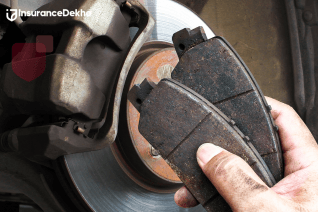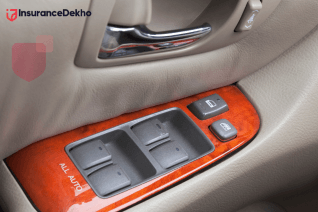Power Steering in Cars: How It Works and Why It’s Essential for Easy Handling
A smooth and controlled driving experience owes much to one key innovation: power steering. Whether you're navigating winding highways or tight city lanes, power steering systems reduce the physical effort required to turn the wheel, making driving safer and more comfortable, especially in challenging road conditions like those often found in India.
This article explores how power steering works, its different types, and how regular maintenance can enhance your vehicle's handling and longevity.

What is Power Steering in Cars?
Power steering systems reduce the physical force needed to turn a vehicle's wheels. Before this technology, drivers had to exert significant muscle power, especially while parking or maneuvering at low speeds. Today, hydraulic or electric assistance systems amplify the driver’s input, delivering precision and ease at every turn.
Key Components of a Power Steering System
Vehicle control enhancement depends on multiple power steering system components that fulfill their specific operational functions.
-
Steering Wheel and Column
The driver controls the vehicle’s direction using the steering wheel, which is connected to the steering column. When the driver turns the wheel, this motion is transferred down the column to the steering gear.
The steering gear plays a crucial role by converting the rotary motion of the steering wheel into the side-to-side movement needed to turn the wheels.
There are two main types of steering gear mechanisms: rack-and-pinion and recirculating ball.
-
Rack-and-pinion systems are widely used in passenger cars because they offer precise handling and a more compact design.
-
Recirculating ball systems, on the other hand, are typically found in larger vehicles like trucks and SUVs due to their durability and ability to handle heavier loads.
Together, these components ensure that steering inputs from the driver are accurately translated into controlled movement of the vehicle’s wheels.
-
Power Steering Pump
The power steering pump is a key component in vehicles with hydraulic power steering systems. It plays a vital role in making steering easier and more responsive.
This pump circulates hydraulic fluid under high pressure through the system. The pressure generated helps reduce the physical effort needed by the driver to turn the steering wheel, especially at low speeds or during parking.
Without this hydraulic pressure, the steering system would feel heavy and difficult to operate.
-
Hydraulic or Electric Actuators
The power steering system functions based on two primary principles: hydraulic pressure and electric assistance.
In hydraulic power steering (HPS), steering assistance is provided through pressurized hydraulic fluid, which reduces the physical effort needed by the driver.
In contrast, electric power steering (EPS) uses an electric motor to assist with steering. This system improves overall performance and reduces energy consumption, as it operates only when needed and doesn't draw continuous power from the engine.
-
Power Steering Fluid (for Hydraulic Systems)
The hydraulic power steering system relies on power steering fluid to function effectively.
This fluid transmits the force from the steering wheel to the steering mechanism, helping the driver turn the wheels with less effort.
Regular maintenance of the fluid, such as checking levels and replacing it when needed, ensures smooth steering performance and helps prevent damage to the system’s components.
How Power Steering Works: Types and Mechanisms
1. Hydraulic Power Steering (HPS)
- How it works: An engine-driven pump circulates fluid to create hydraulic pressure. Turning the steering wheel opens a valve, directing fluid to assist wheel movement.
- Used in: Older cars, SUVs, and trucks.
2. Electric Power Steering (EPS)
- How it works: An electric motor, controlled by an ECU (electronic control unit), provides assistive force. Sensors detect torque and steering angle to adjust assistance.
- Advantages: No fluid required, improved fuel efficiency, adaptive steering assistance
3. Electro-Hydraulic Power Steering (EHPS)
- How it works: Combines both systems, an electric motor drives the hydraulic pump instead of the engine. Offers hydraulic responsiveness with improved efficiency.
- Used in: Performance vehicles and select commercial cars.
Why Power Steering Is Essential
Power steering has revolutionized vehicle handling, making driving more comfortable, safe, and efficient. Below are the key advantages of power steering systems:
-
Effortless Steering & Reduced Driver Fatigue
People without power steering would need to provide intense muscular effort when turning wheels during slow driving situations including parking activities. The power steering system eases driver control through reduced effort, thus creating comfort during driving and helping to prevent driver fatigue during extended trips.
-
Precision Steering for Different Driving Conditions
Power steering systems from the present era, including EPS use steering force adjustments for different speeds.
-
Better Handling in Tight Spaces & City Driving
Vehicle owners experience simpler operation during tight street navigation and challenging parking situations, and tight turns thanks to the presence of power steering systems.
-
Enhanced Fuel Efficiency with EPS Systems
Electric Power Steering (EPS) eliminates the need for a hydraulic pump, reducing the engine’s workload. This results in better fuel efficiency compared to traditional Hydraulic Power Steering (HPS) systems, which rely on engine power to operate.
-
Reduced Wear & Tear on Steering Components
The Electric Power Steering system requires no hydraulic pump, which decreases engine load. The system delivers improved fuel economy performance when compared to conventional Hydraulic Power Steering (HPS) due to its independent power operation.
Power Steering in the Indian Automotive Context
In India, where narrow lanes, potholes, and traffic jams are common, power steering is no longer a luxury, it’s a necessity. Most modern Indian cars now come equipped with EPS due to:
-
Lower servicing needs
-
Better fuel efficiency
-
Enhanced maneuverability in urban environments
Even entry-level hatchbacks today include power steering as a standard feature.
Maintenance Tips for Power Steering Systems
Regular maintenance ensures your power steering system remains efficient and reliable:
- Check fluid levels regularly in hydraulic systems.
- Listen for whining or groaning sounds, they often signal low fluid or pump issues.
- Inspect for leaks around the power steering pump or hoses.
- Monitor belt condition in hydraulic setups, as worn belts reduce pump efficiency.
Power steering is one of the most significant advances in vehicle technology, offering a safer, smoother, and more fuel-efficient driving experience. Whether your vehicle uses hydraulic, electric, or electro-hydraulic systems, understanding how it works and keeping it well-maintained ensures peak performance and reliability.
As Indian road conditions and driving demands evolve, so do our vehicles, EPS now leads the charge, providing smarter and more efficient control with minimal upkeep. Regular checks and timely servicing of your power steering system are small efforts that pay off in big ways, better safety, less fatigue, and a more enjoyable drive.














































